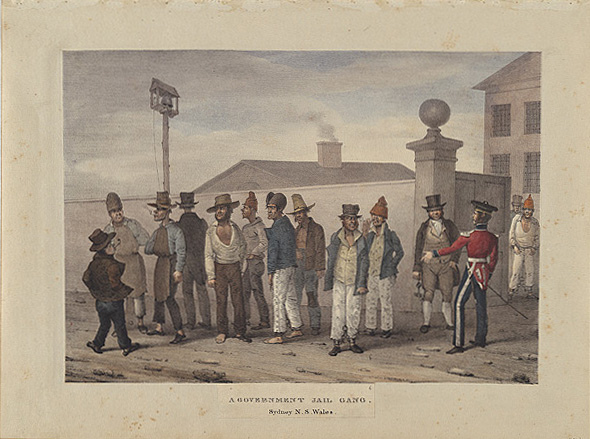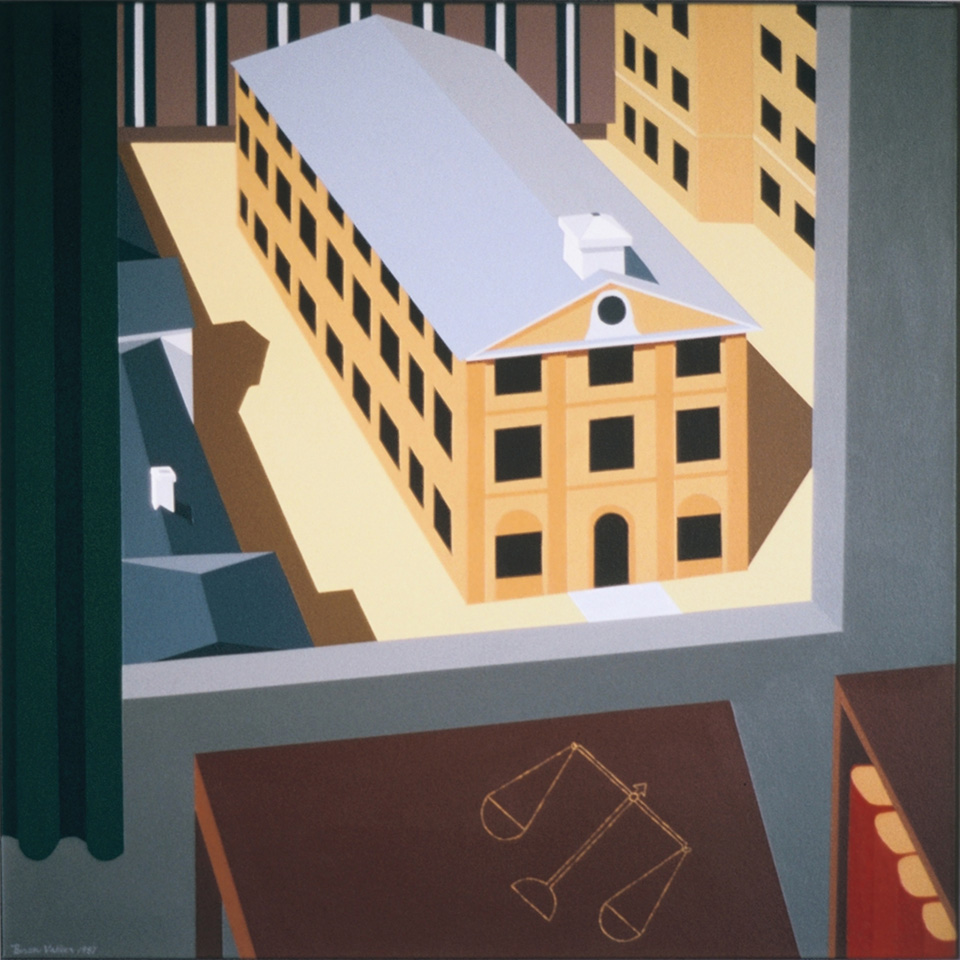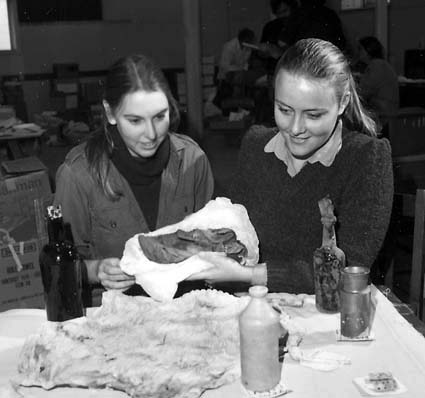The Dictionary of Sydney was archived in 2021.
Hyde Park Barracks
Citation
Persistent URL for this entry
To cite this entry in text
To cite this entry in a Wikipedia footnote citation
To cite this entry as a Wikipedia External link
Hyde Park Barracks
[media]Hyde Park Barracks was built under instruction from Governor Lachlan Macquarie to provide accommodation for up to 600 male government-assigned convicts. It was constructed using skilled convict labour between 1817 and 1819 to a design by the convict architect Francis Greenway.
[media]Greenway's distinctive Georgian three-storey central dormitory building was set within a rectangular compound with high perimeter walls and domed pavilions at each corner, used as cells and guard houses. Offices for the clerk and constable were in the lodges on either side of the main entrance gate, while rooms set within the perimeter walls housed the deputy superintendent and his family and amenities including a kitchen and mess.
[media]The barracks became redundant after convict transportation to NSW ended in 1840. In 1848, the male convicts still living at the barracks were moved to Cockatoo Island. After this, Hyde Park Barracks and its grounds accommodated a diverse, and often overlapping, array of occupants.
In 1848, the central dormitory building was modified to house a female immigration depot and the agent for immigration, which oversaw the migration and placement of British- and Irish-born single women as domestic servants. Offices and hiring rooms were on the first floor, and temporary accommodation for new arrivals on the second and third. From this time, additional buildings within the barracks grounds were built, while existing structures were adapted to house a range of government and judicial occupants including the Government Printing Office (1848–56), the Court of Requests (1856–59), the Vaccine Institute (1857–86) and the District Court for Sydney (1858–1976).
In 1862, the third floor of the central dormitory building was converted for use by the Government Asylum for Infirm and Destitute Women, which contained just over 200 patients at its peak. Matron Lucy Applewhaite Hicks and her family lived at Hyde Park Barracks while [media]she was employed there as head matron at the Female Immigration Depot, then as superintendent overseeing both groups of women from 1862.
In 1886, the asylum patients were moved to Newington Asylum and the immigration depot was relocated elsewhere in Sydney. The Department of Attorney General and Justice oversaw extensive remodelling of the buildings within the barracks complex, and the construction of new ones for its use. In 1887 the row of buildings along the northern wall of the yard was converted into a series of offices for the newly appointed Examiner of Patents, the Inspector of Weights and Measures and a temporary coroner’s court. There was no attached morgue - these were located at The Rocks and the Devonshire Street Cemeteries - but the premises included an office for the Sydney City Coroner and the jury, as well as a courtroom in the centre of the building which featured a dock for reporters and a dais for the Coroner.[1] The Hyde Park Barracks was used primarily for judicial purposes until 1979, despite some calls for its demolition in the early-20th century.
Government proposals to demolish the barracks in the 1930s prompted fiery debate and mobilised the nascent heritage movement in Sydney, eventually contributing to the formation of the National Trust in 1945. The barracks was placed on the Register of the National Estate in 1978, and three years later was granted one of the first permanent conservation orders in New South Wales under the 1977 Heritage Act. In 1980, the state government announced that Hyde Park Barracks would be converted into a museum of Sydney's history and that the physical fabric of the central dormitory building would be restored to its original convict phase, meaning that additions to the building and grounds would be stripped away to reveal Greenway's original design. [media]When restoration works began, artefacts were revealed under the floors of the central dormitory building and within the grounds of the compound, which led the Department of Public Works to embark on Sydney's first large public archaeological excavation.
In 1984, the barracks was opened to the public as a museum, managed by the Museum of Applied Arts and Sciences, now the Powerhouse Museum. In 1990, the barracks was transferred to the Historic Houses Trust, and, after another refurbishment, was reopened as a museum displaying its own history, with particular focus on its convict heritage.
References
Margaret Betteridge, 'The Sydney Mint Building and the Hyde Park Barracks Museum Project', in Patricia Burritt (ed), 'Historical Archaeology at the Sydney Mint and the Hyde Park Barracks 1980–81', unpublished report for Department of Environment and Planning and Department of Public Works, 1981
Penny Crook, Laila Ellmoos and Tim Murray, Assessment of Historical and Archaeological Resources at the Hyde Park Barracks, Sydney, Historic Houses Trust of NSW, Glebe, 2003 https://www.latrobe.edu.au/humanities/huss-documents/Hyde-Park-Barracks-Assessment-Report.pdf
Lynn Collins and Peter Emmet, Hyde Park Barracks, Historic Houses Trust of NSW, Glebe, 1994
Hyde Park Barracks Museum, Historic Houses Trust website, http://www.hht.net.au/museums/hyde_park_barracks_museum/hyde_park_barracks_museum, viewed 2007 (https://web.archive.org/web/20070830122059/http://www.hht.net.au/museums/hyde_park_barracks_museum/hyde_park_barracks_museum)
Australian Monument to the Great Irish Famine (1845-1848) website, http://www.irishfamine.org, viewed 2005 (https://web.archive.org/web/20050911075902/http://www.irishfamine.org/)







